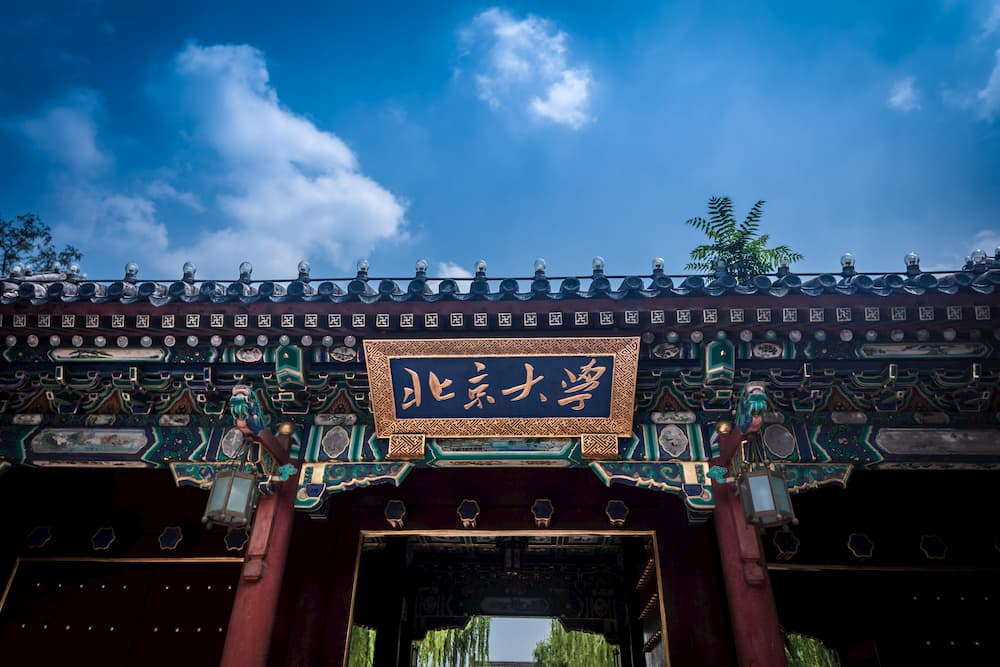
Universities in China
Splendid
Chi Culture
Topic
Universities in China
Modern Chinese universities, established after the abolition of the imperial examinations in the Qing dynasty (1644–1911), were modeled after those in the West and have little in common with earlier educational institutions. Qing officials advocating Westernization—Yi Xin (1833–1898), Li Hongzhang (1823–1901), Zuo Zongtang (1812–1885), Zhang Zhidong (1837–1909), and others—established several Western-style schools between 1860 and 1890. Among the schools were the Tongwenguan (School of combined learning) in Beijing, Chuanzheng Xuetang (Fuzhou Naval College) in Fujian, Zhong-Xi Xuetang (School for Chinese and Western learning) in Tianjin, and Nanyang Gongxue (Nanyang public school) in Shanghai, to meet the need for Western education. These were the predecessors of modern universities in China. These new specialized schools taught Western languages, natural sciences, and military technology. The first modern Chinese official university was inaugurated when the Imperial University of Peking was established in 1898. More than a century ago, its name was changed to Peking University.
The Reform and the National Salvation movements began in the late Qing period. These movements led by Kang Youwei (1858–1927), Liang Qichao (1874–1929), Yan Fu (1854–1921), and Tan Sitong (1865–1898) attempted to reform the Qing government. Fostered by these movements, modern and new-style universities emerged in response to the needs of the times. The Guangxu emperor (r. 1875–1908) appointed Sun Jianai (1827–1909) the grand minister of schools and made him responsible for organizing the Imperial University of Peking. Liang Qichao was responsible for formulating the relevant articles, and adopting the curriculum model of modern Western universities.
The Imperial University of Peking, the first national university in modern China, officially opened in late 1898. Affected by the failure of the political reform, the university only set four courses: Shi jing (Classic of songs), Shu jing (Classic of documents), Yi jing (Classic of changes), and Li ji (Record of rites), and two courses on the Chunqiu (Spring and autumn annals). There were fewer than a hundred students. Xu Jingcheng (1845–1900) was the head instructor for Chinese, and Ding Weiliang (William Alexander Parsons Martin, 1827–1916) was the head instructor for Western languages. After the occupation of Beijing by the allied forces of the Eight Powers in 1900, the university closed. In 1902, it reopened, and officially became a university with departments; excluding medicine, there were seven departments. In 1912, the name was changed to Peking University, and Yan Fu was appointed its first president. In 1916, Cai Yuanpei (1868–1940) became the president of the university; he promoted the policy of “Academic freedom, compatibility and magnanimity.” (All-embracing, all containing, all-inclusive).
From 1905, the year the imperial examination system was abolished, to 1922, the year the new educational system was implemented, China gradually established a group of universities to meet the country’s needs for specialized scholars. After the Republic of China was founded, the Minister of Education, Cai Yuanpei, presided over the drafting of a series of educational decrees and regulations which promoted university reforms, and gradually established a relatively complete system of university education. As the number and types of universities continued to grow, the administrative systems were updated, institutes for the management of specialized education were established, and management functions were expanded. Admission examinations were instituted and held by each university, which admitted the students with the best examination results. After they graduated, they sought employment themselves, without the help of the university. In terms of teaching management, the Western classroom system was introduced, modern curriculum standards were referred to, and credit and elective systems were implemented.
From 1912 to 1927, the number of universities increased rather rapidly. There were seven private universities in 1917, by 1925 there were twenty-five. In addition to the already established Peking University, Peiyang University (Imperial Tientsin University), and Shanxi University were established. The National Southeast University was established in 1921 as a successor to the National Nanjing Higher Normal School. In the following years, Jiaotong (Chiao Tung) University, Jinan (Chi Nan) University of Commerce, Peking Normal University, Northeastern University, National Canton University (later renamed Sun Yat-sen University) and Shandong University were established. In 1927, there were fifty-two universities in China.
Regulations, in the early years of the Republic of China, stipulated that a university should include seven disciplines: liberal arts, sciences, law, business, medicine, agriculture, and engineering, with an emphasis on liberal arts and science. Rules existed governing whether an educational institution could be called a university; these rules stipulated that in order to receive the designation, one of the following combination of subjects must be offered: liberal arts and science, or liberal arts together with law and business, or science together with one or two of the following disciples: medicine, agriculture, or engineering. However, in 1917, a university with a single discipline was allowed. In 1929, the University Organizational Law and the University Code were issued; the new regulations stipulated that a university could be divided into eight schools: liberal arts, sciences, law, education, business, engineering, agriculture, and medicine. An institution with three or more schools could be called a university; however, the three schools needed to include schools of liberal arts and sciences, and either a school of engineering, agriculture, or medicine.
In the Republican era (1912–1949), universities produced talented luminaries such as, the physicists Wang Zhuxi (1911–1983), Lin Jiaqiao (Chia-chiao Lin, 1916–2013), Qian Weichang (1912–2010), and Peng Huanwu (1915–2007); the nuclear physicists Shi Shiyuan (Zse Shih-Yuan, 1908–2007), Wang Ganchang (1907–1998), and Qian Sanqiang (1913–1992); experts on optics Zhou Tongqing (1907–1989) and Wang Dahang (1915–2011); the geophysicist Zhao Jiuzhang (1907–1968); the mathematician Chen Xingshen (Shiing-shen Chern,1911–2004); the archaeologist Xia Nai (1910–1985); the historians Wu Han (1909–1969) and He Bingdi (Ping-ti Ho, 1917–2012); the belles lettrists Qian Zhongshu (1910–1998), Zhu Ziqing (1898–1948), and Cao Yu (1910–1996); the philosopher, historian, and linguist Ji Xianlin (1911–2009); the linguist Wang Li (1900–1989); the sociologist Fei Xiaotong (1910–2005); and the diplomat Qiao Guanhua (1913–1983).



